As temps soared to triple digits in our formerly mild Pacific Northwest, a network of undergraduates, graduate students, neuroscientists and artists arrived in Hillsboro, Oregon to talk brains and make art.
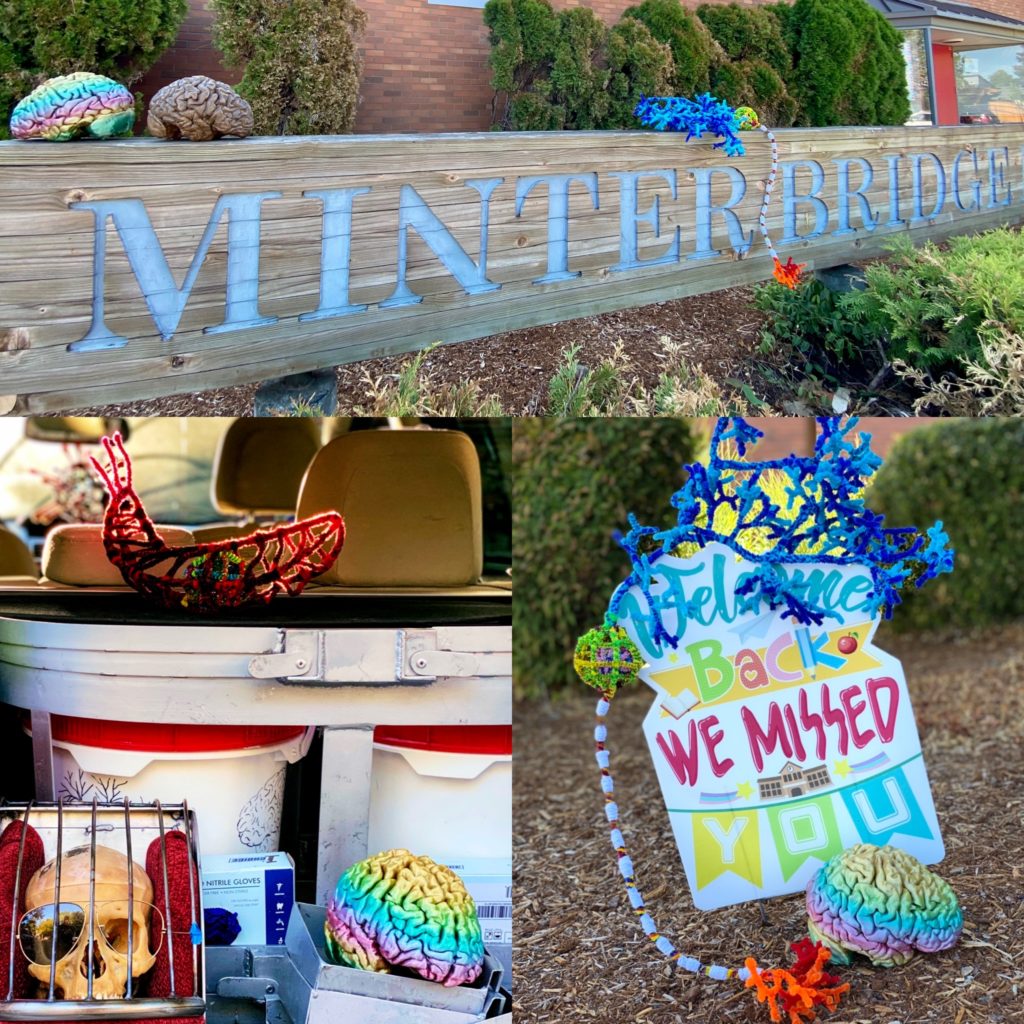
LEARN MORE: The Pacific Northwest Is Getting Hit By Another Heat Wave
LEARN MORE: Climate change widespread, rapid, and intensifying (IPCC)
We were there – masked, outdoors and fully vaccinated against SARS-CoV2 – to meet with about 100 first through fifth graders at Minter Bridge Elementary in Hillsboro Public Schools. This was our second visit to Minter Bridge, a dual immersion language school that offers instruction in both English and Spanish.
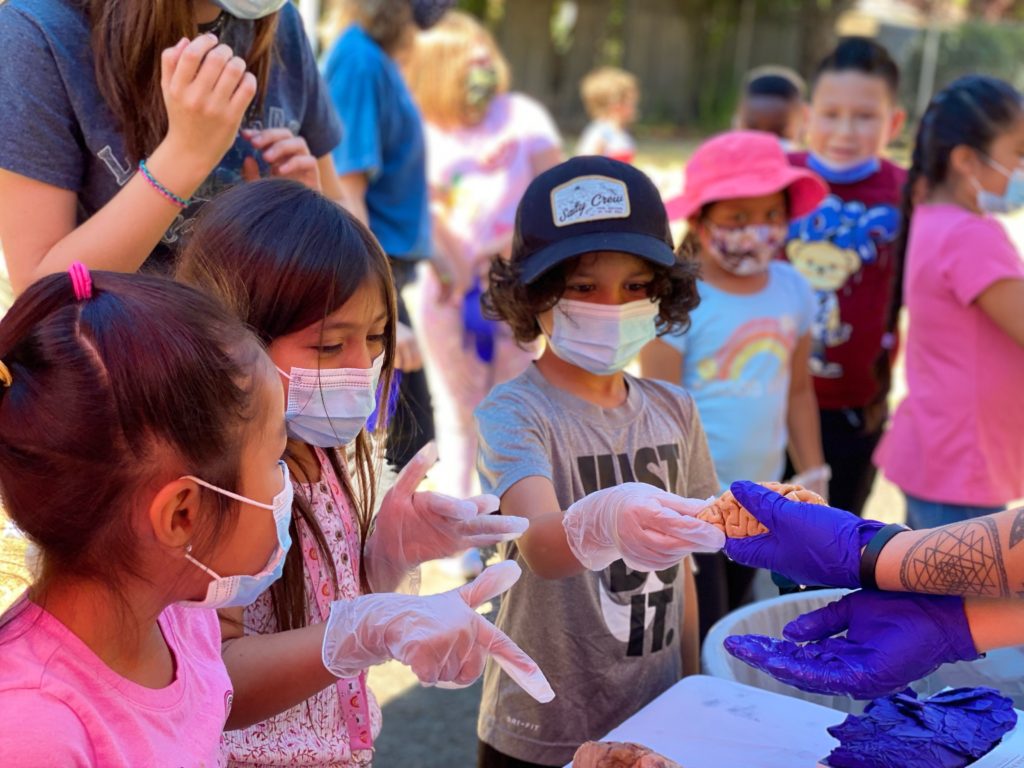
“The cure for boredom is curiosity. There is no cure for curiosity”
– Dorothy Parker
LEARN MORE: Meninges over Minter Bridge!
Jessica Patching-Bunch, a stress-resilience coach, founder of Brain + Body Resilience, and a long time volunteer and former Communications Director for NW Noggin, had thoroughly prepped her students in brain basics. Jessica also created the definitive Noggin pipe cleaner neuron building video during outreach at the 2017 Society for Neuroscience conference in Washington DC!
LEARN MORE: Make a pipe cleaner brain cell (glia too!)
LEARN MORE: Crafting coronavirus
Our informed and motivated volunteers included extraordinary artist and Noggin Brain Board member Kanani Miyamoto (who has a show opening August 22), postdoctoral scholar Yangmiao Zhang and graduate student Sarah Holden from Oregon Health & Science University, Angela Hendrix from NW Noggin, and undergraduates Kiara Hunt, Kilsi Naanee, Kari Baher, Alex Heinrich, Kevanna Doolittle, Roman Cimkovich, Jessie Sheeran, and Dave Beaty (and his son John) from Portland State University!
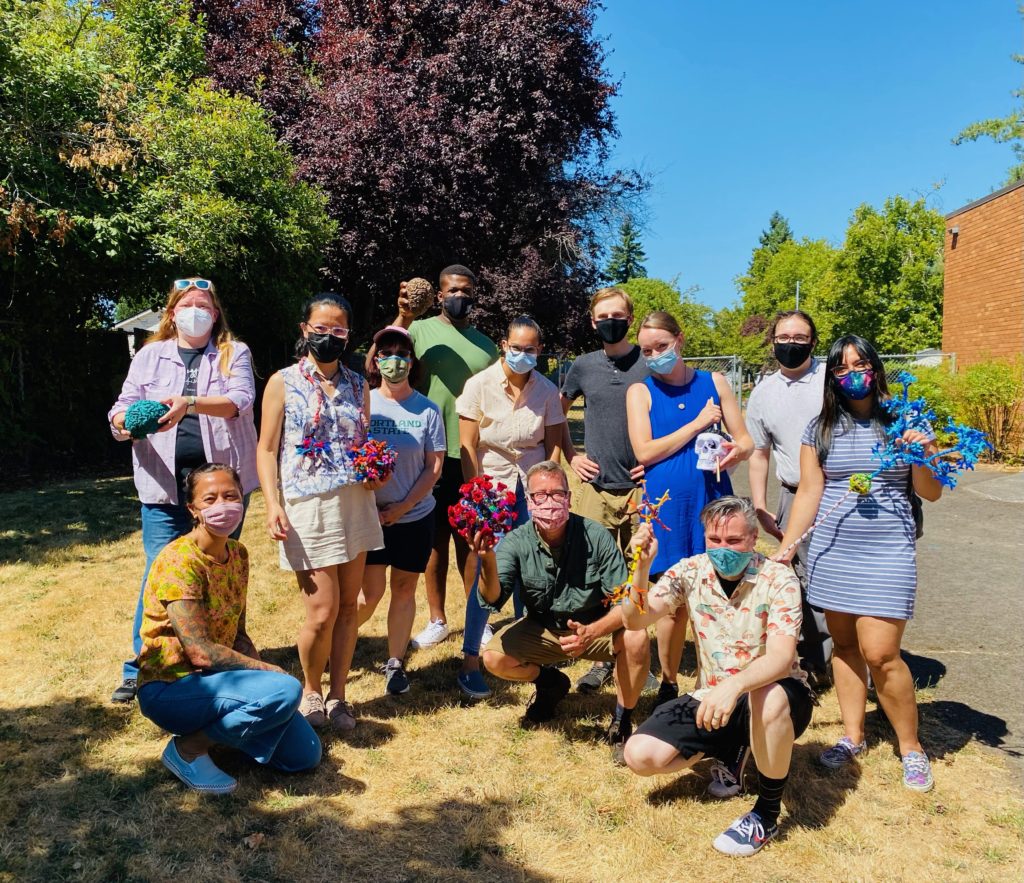
Jesse brought along an incredible bison skull, that we labeled with details on its compelling anatomy.
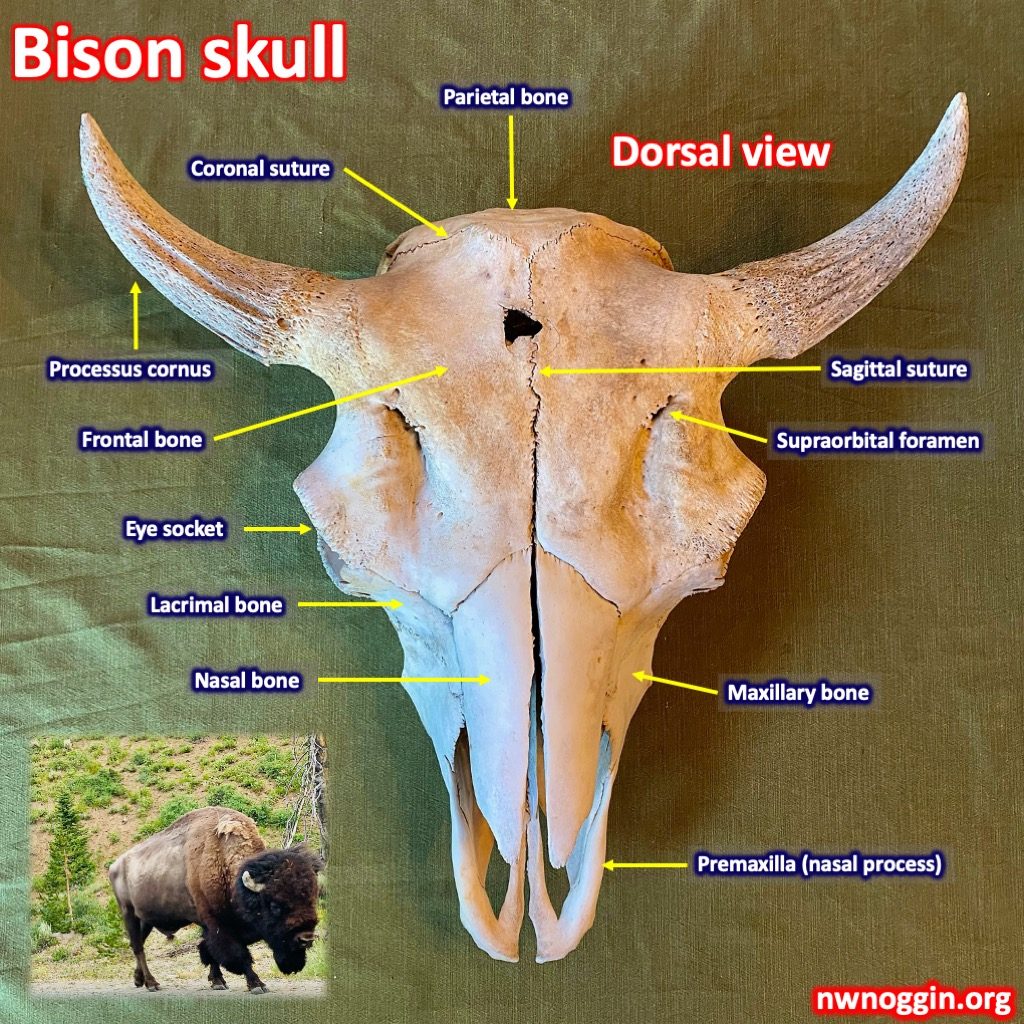
The bison brain is fascinating too. “Many features vary significantly from most previously described ungulate species including its large size, fissural pattern of the cerebral hemispheres and well developed insular cortex. The midbrain, particularly the tectum, is outstanding: the superior colliculi appear to be the largest reported for any mammal…”
LEARN MORE: A macroscopic study of the brain of Bison bison bison, the American plains buffalo
We then welcomed wave upon wave of curious students excited to examine our skulls and noggins, ask pointed questions and craft their own unique (sometimes wearable : ) cells!
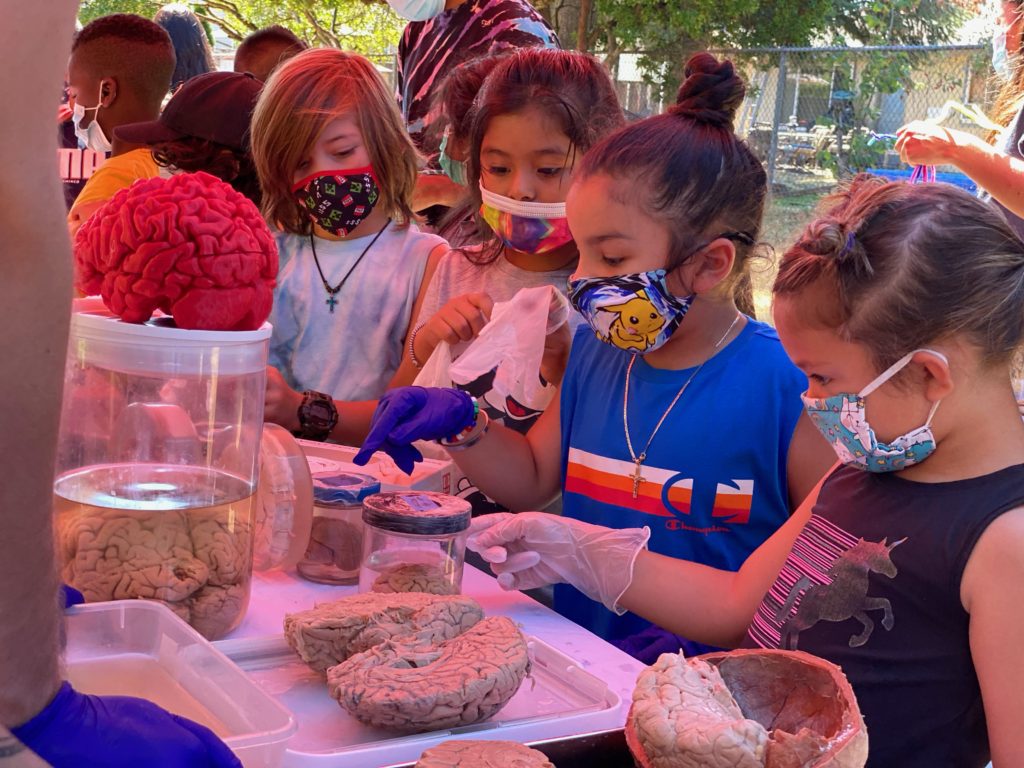
LEARN MORE: NEW BRAINS! Cross-country Noggins
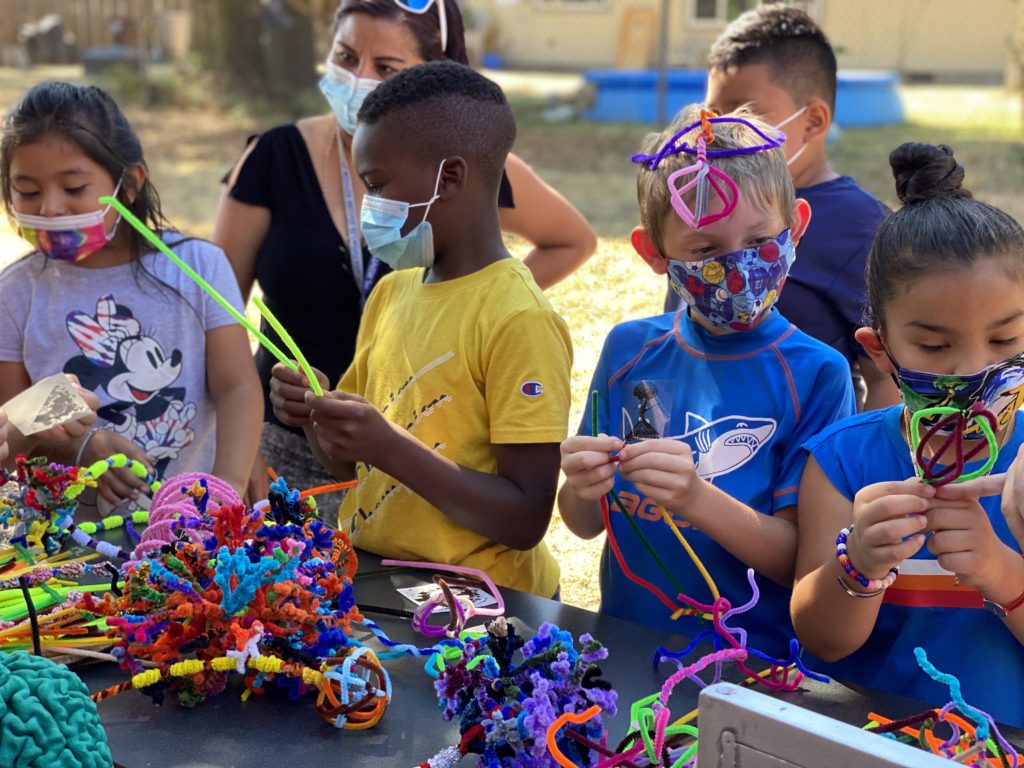
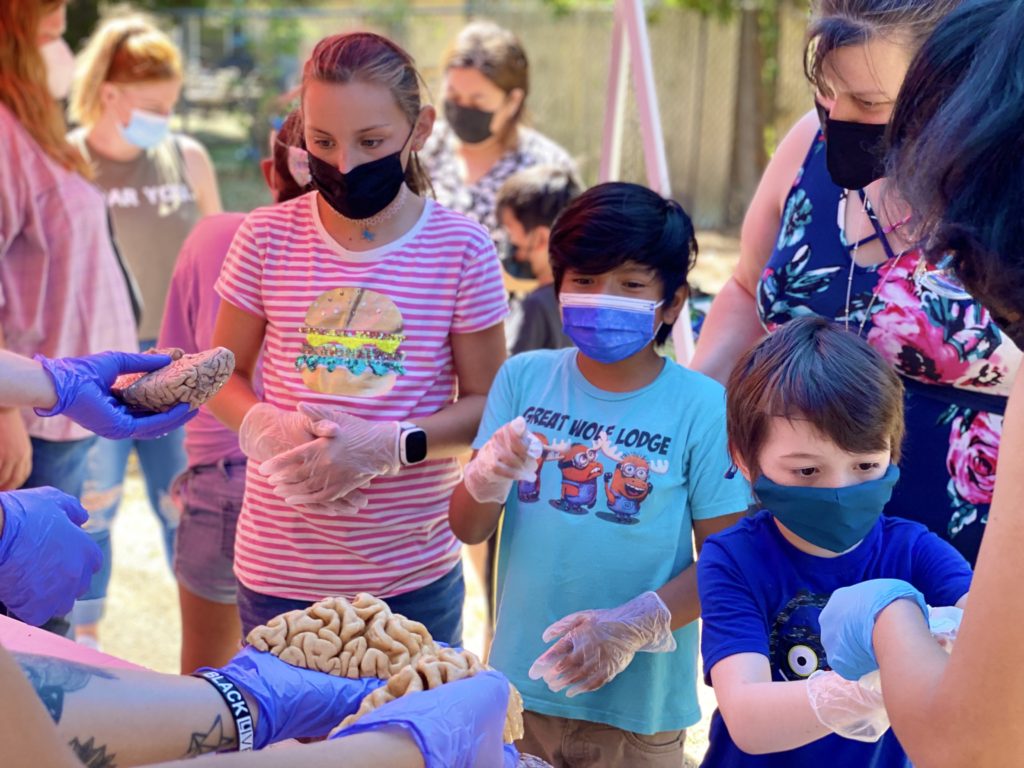
We love this!
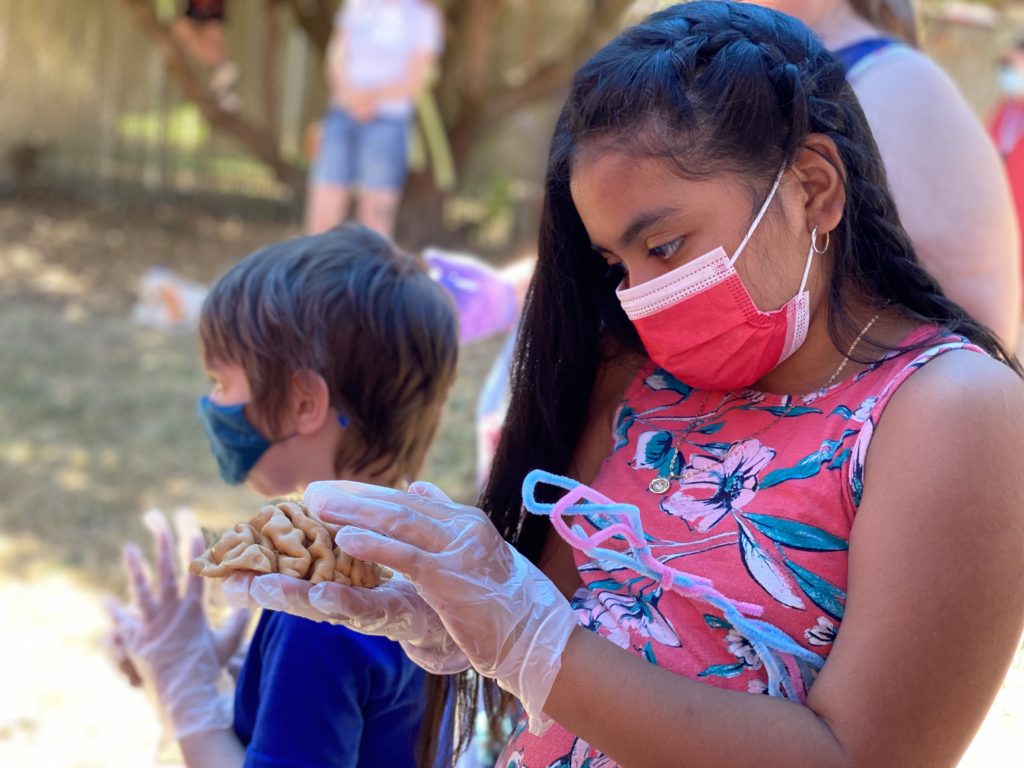
We love engaging, going places and listening, all of us volunteers who are excited by discoveries in neuroscience and genuinely enjoy making things and connecting with other people. We watched our students from PSU and OHSU clearly inspire some emerging young artists and neuroscientists – and contribute to a welcome, healthy learning community in these complex and challenging times.
LEARN MORE: Synapsing in San Diego
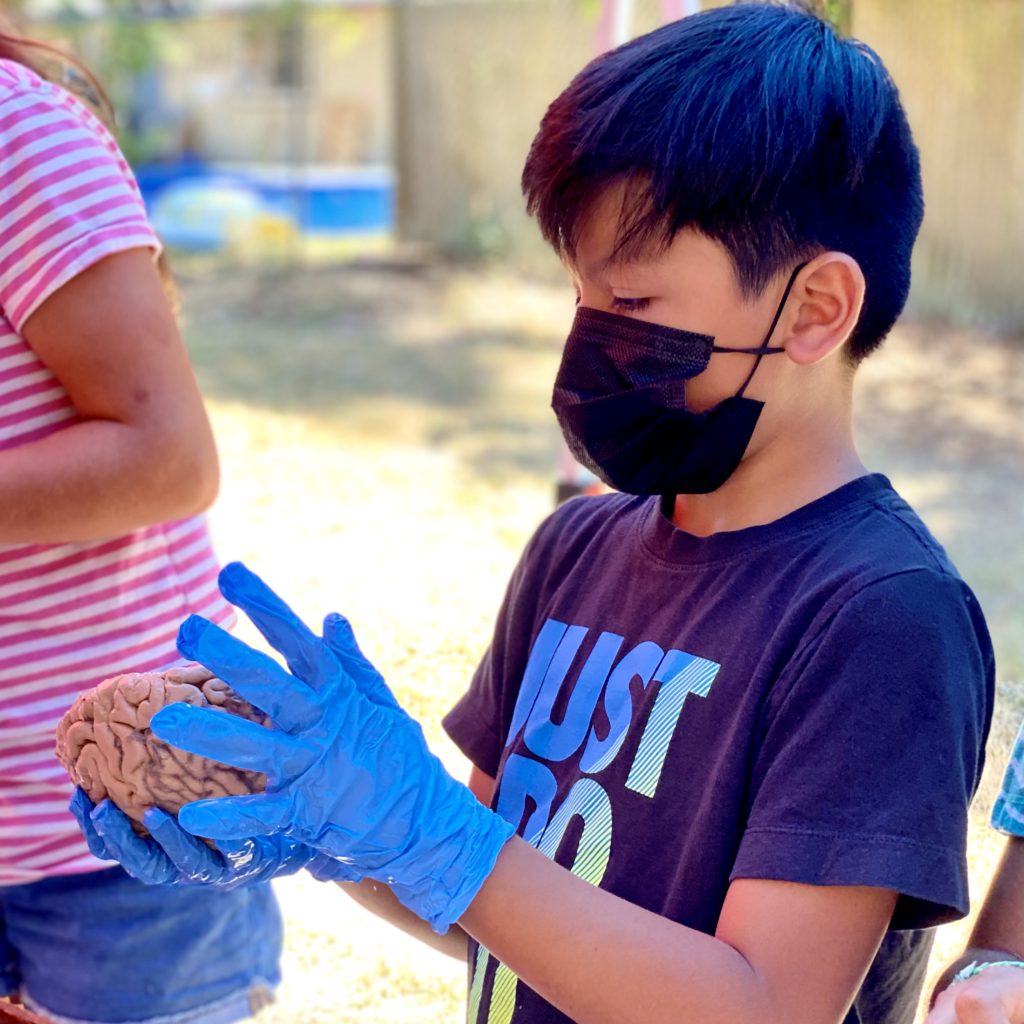
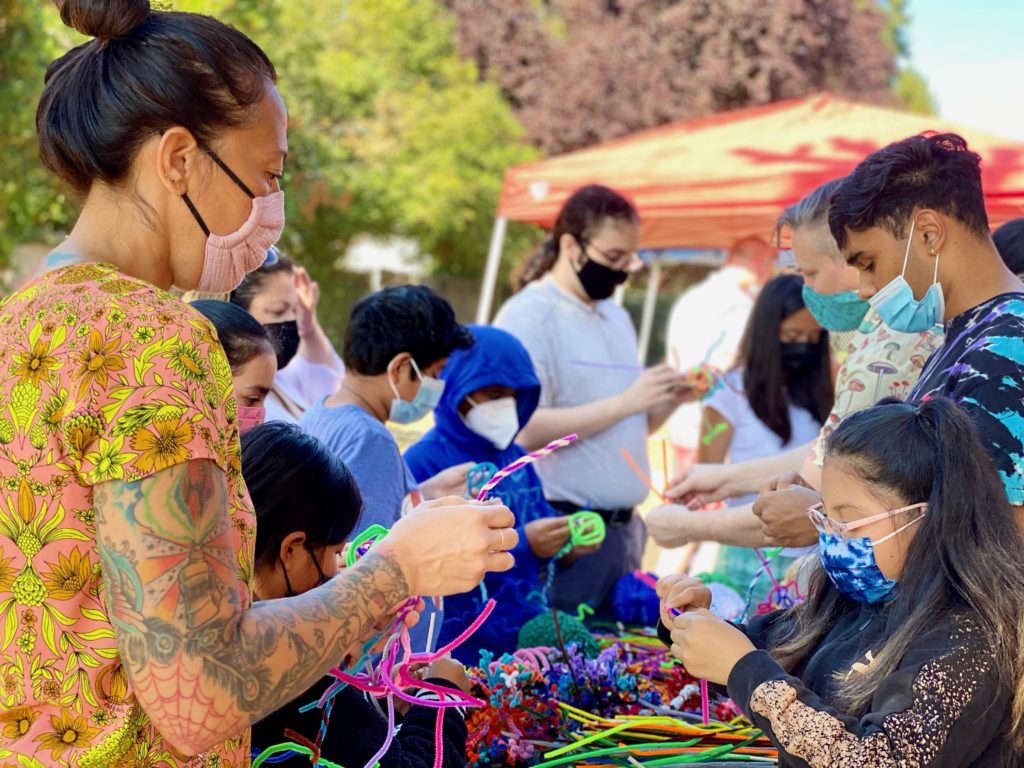
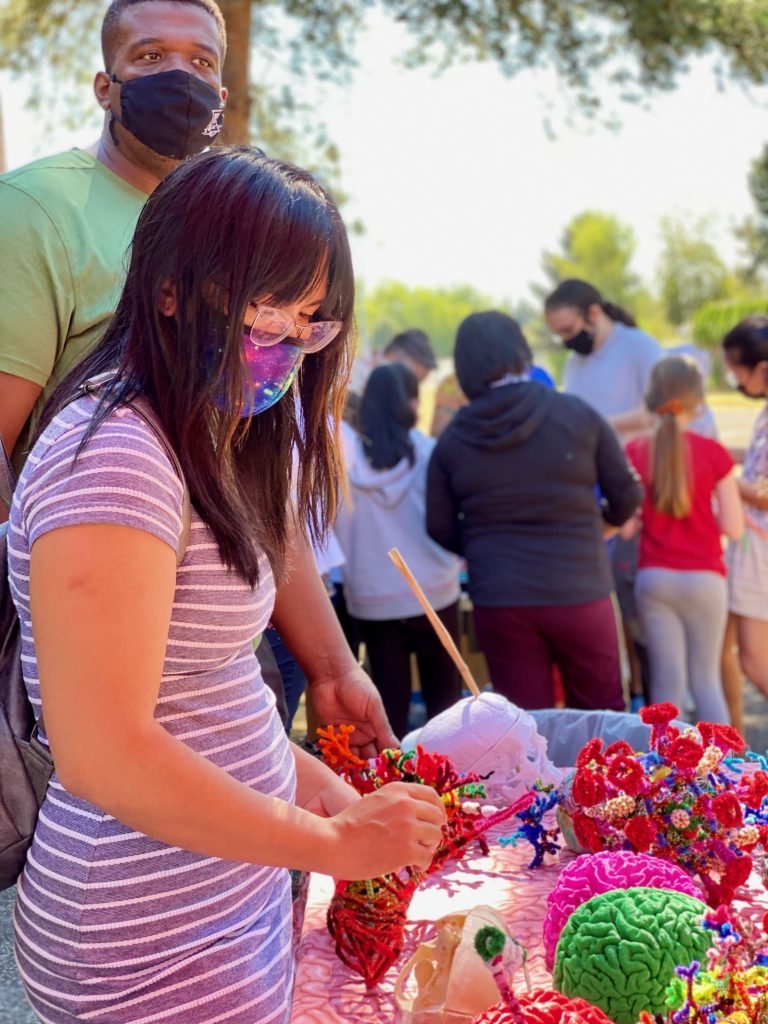
From Kari Baher @ Portland State University
“This was a life-giving volunteer experience!”
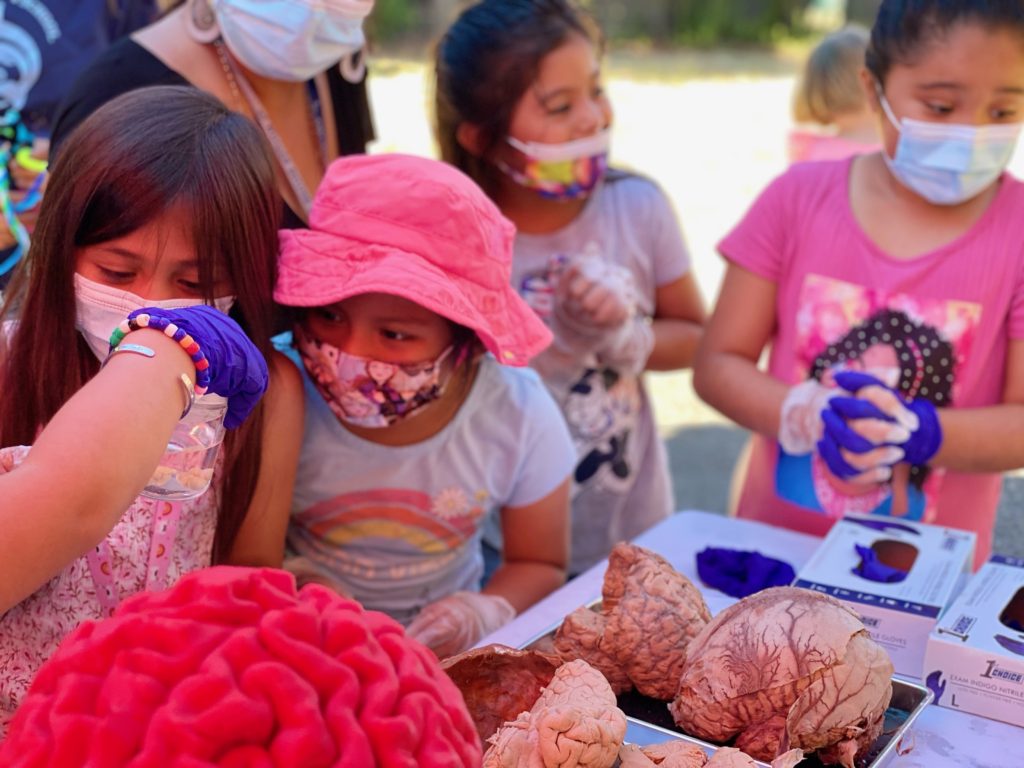
“It was so amazing to see children get excited about brains and neurons. I think it’s absolutely wonderful for children to have hands-on, in-person experiences! I love that children are curious and aren’t afraid to ask questions! I found it awesome that many of them recognized the COVID-19 model without us having to say a thing! The most popular question we were asked was probably ‘where did the brains come from and did it hurt?'”
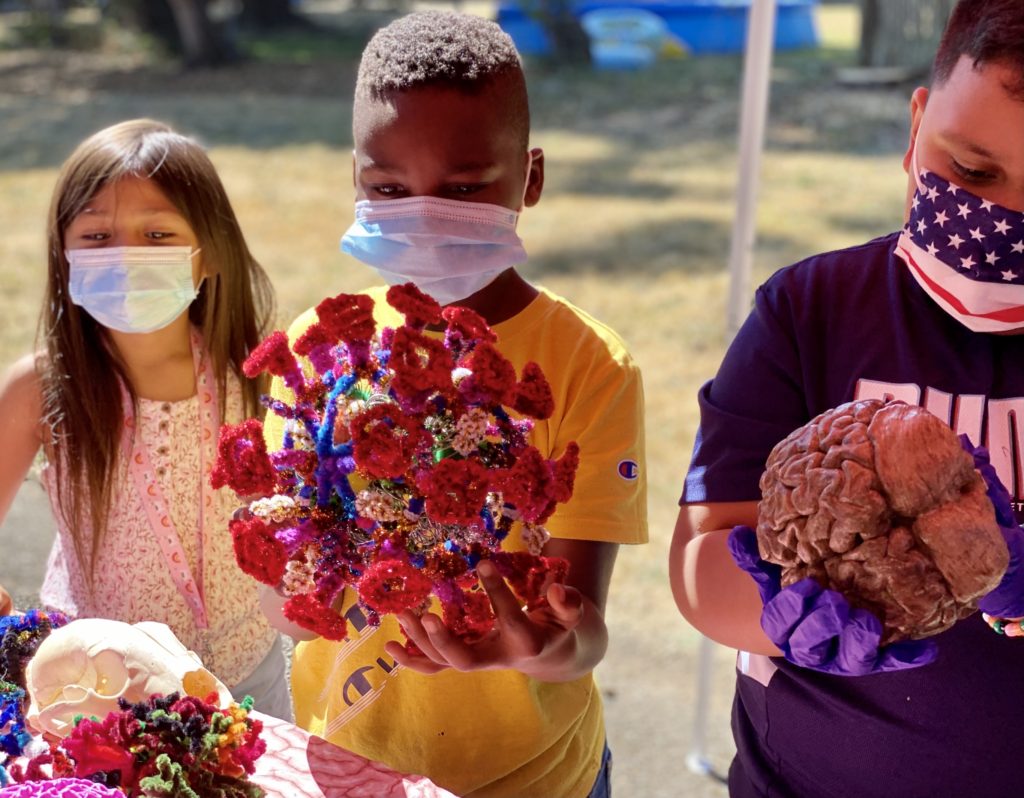
“I was touched to see children encouraging both adults and children to touch a brain or make a neuron. In a time when the world doesn’t always seem that ‘giving,’ working with the students on Wednesday reminded me that the world is a beautiful place filled with beautiful hearts and curious minds!”
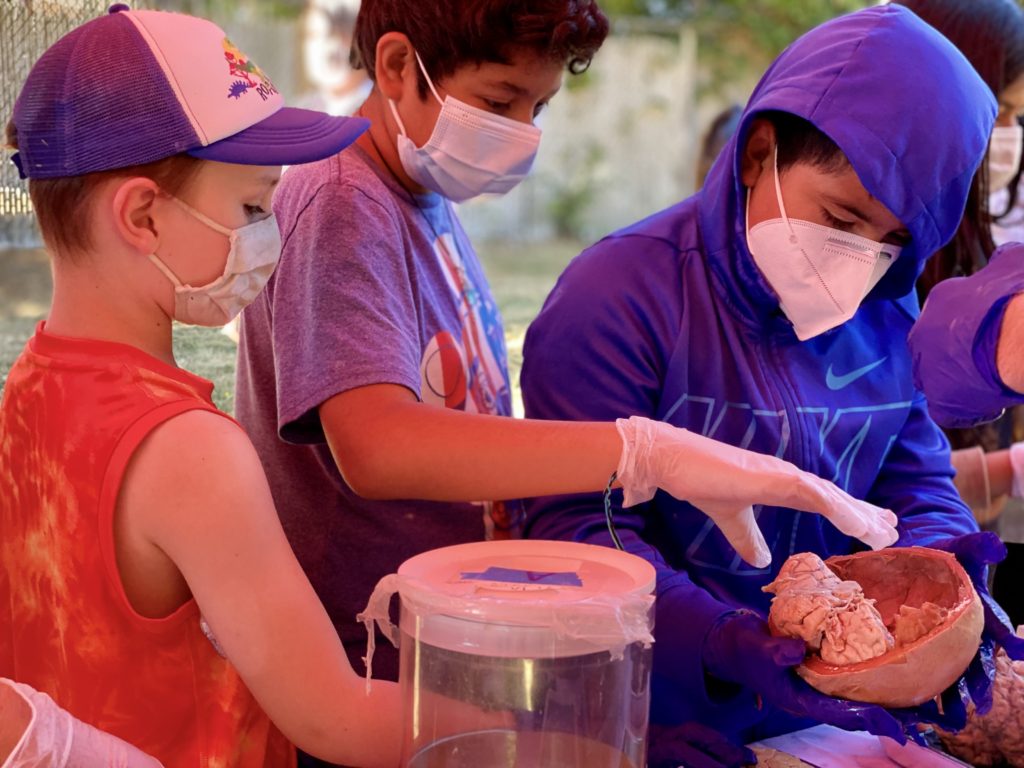
From Dave Beaty @ Portland State University
“I thought it was great! Maybe obviously, the big hit was the opportunity to handle the real brains. The timeline seemed appropriate for the kiddo’s attention spans. Here’s my brief interview with John regarding the event:”
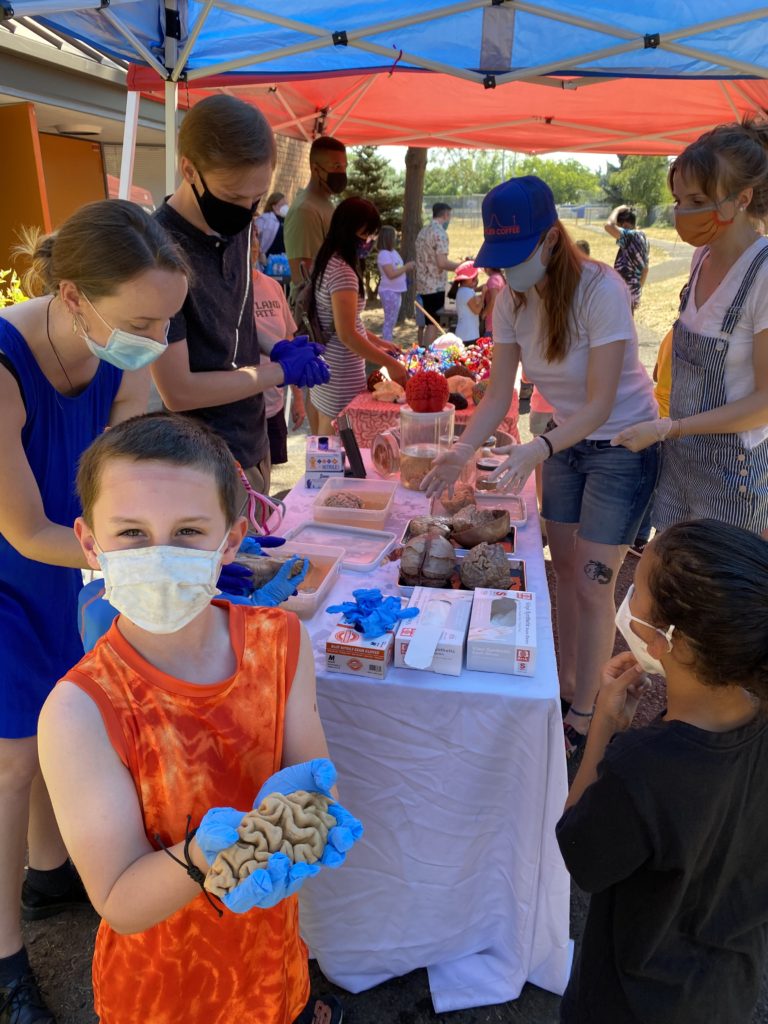
What did you think about the NW Noggin Event?
I thought it was fun!
What was your favorite thing about it?
Picking up the human brain.
What could we improve on?
Nothing.
What is something you learned?
I learned about that guy with the thing that went through his head (Phineas Gage). We learned that he used to be nice until that thing went in his brain, and then for awhile he wasn’t as nice.
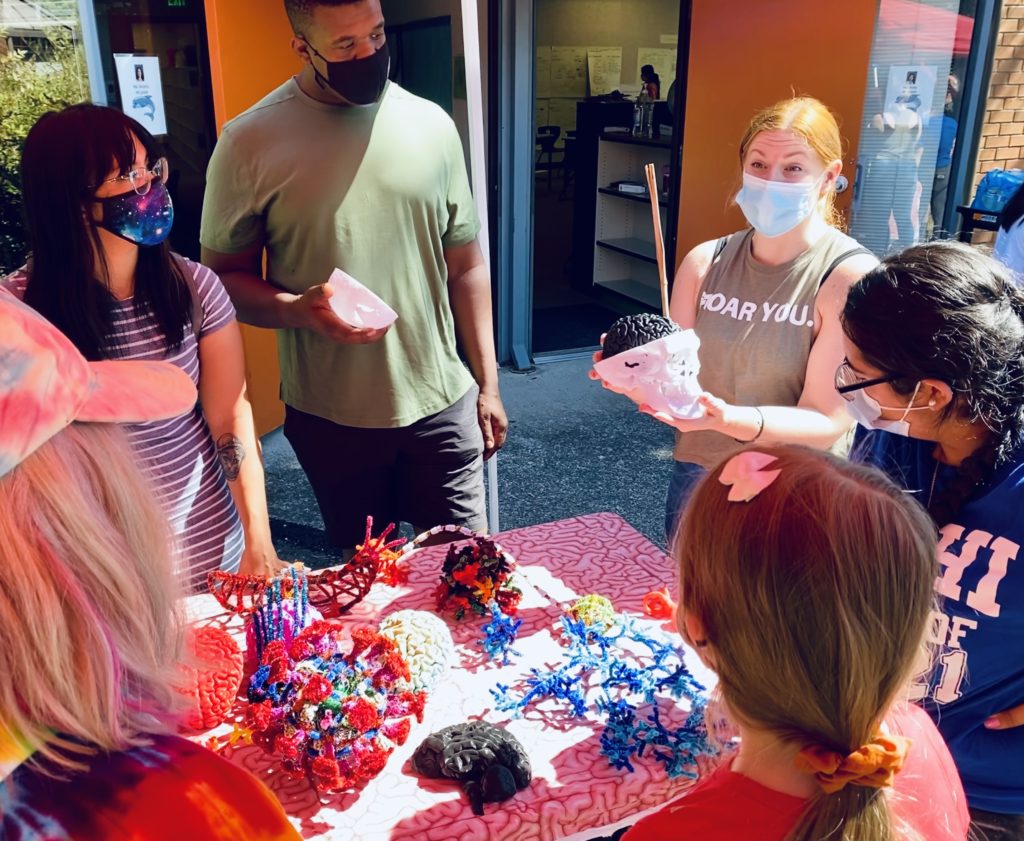
LEARN MORE: Franklin and Phineas Gage
What is something else you learned?
I learned that there are wavy things inside your nose.
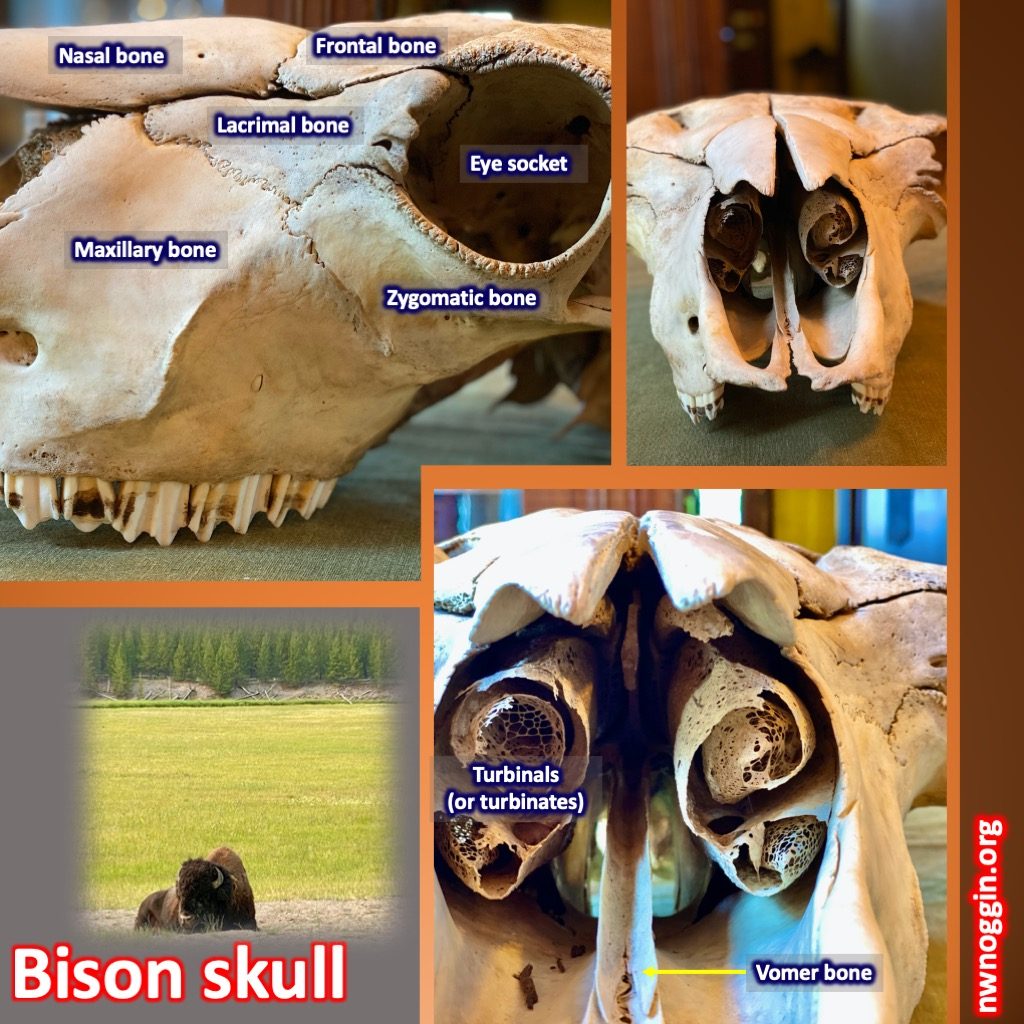
LEARN MORE: Adventure A-Head
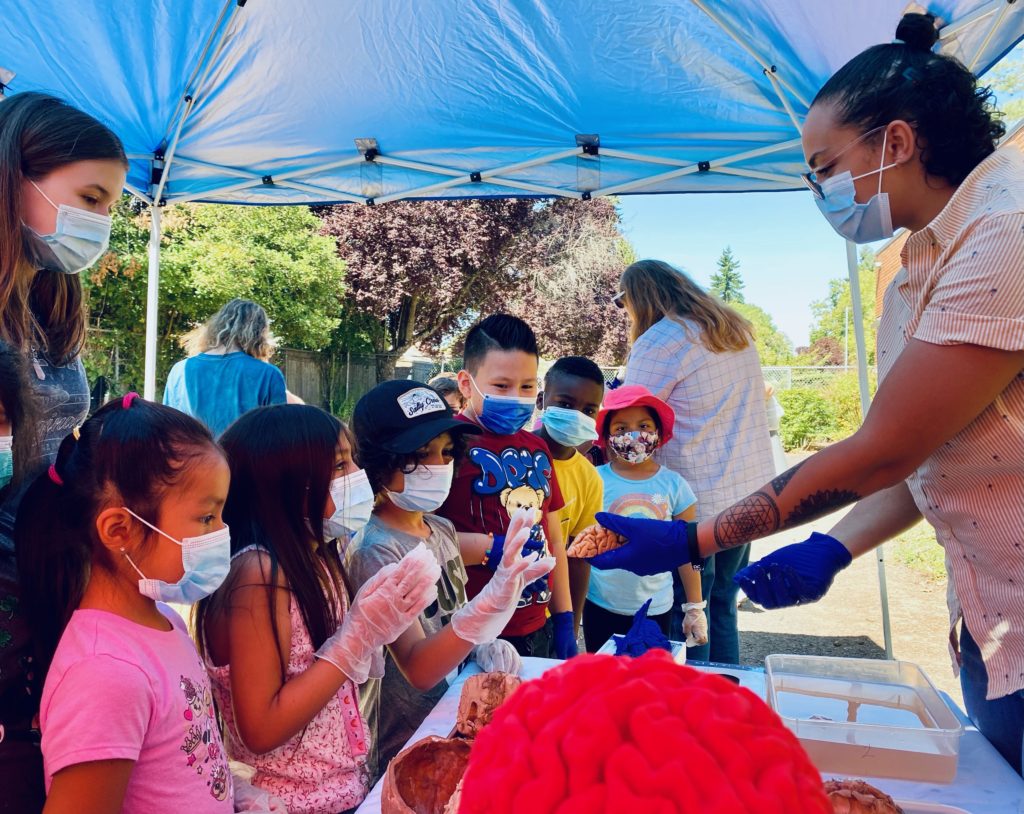
From Sarah Holden @ OHSU
“Yesterday was my first NOGGIN experience, and I am SO grateful.”
“It was amazing to see the kid’s excitement (tinged with slight disgust) at seeing human brains. They could hardly believe that it was real! My favorite part was seeing the kids who initially refused to touch the brain eventually come around and hold one :)”
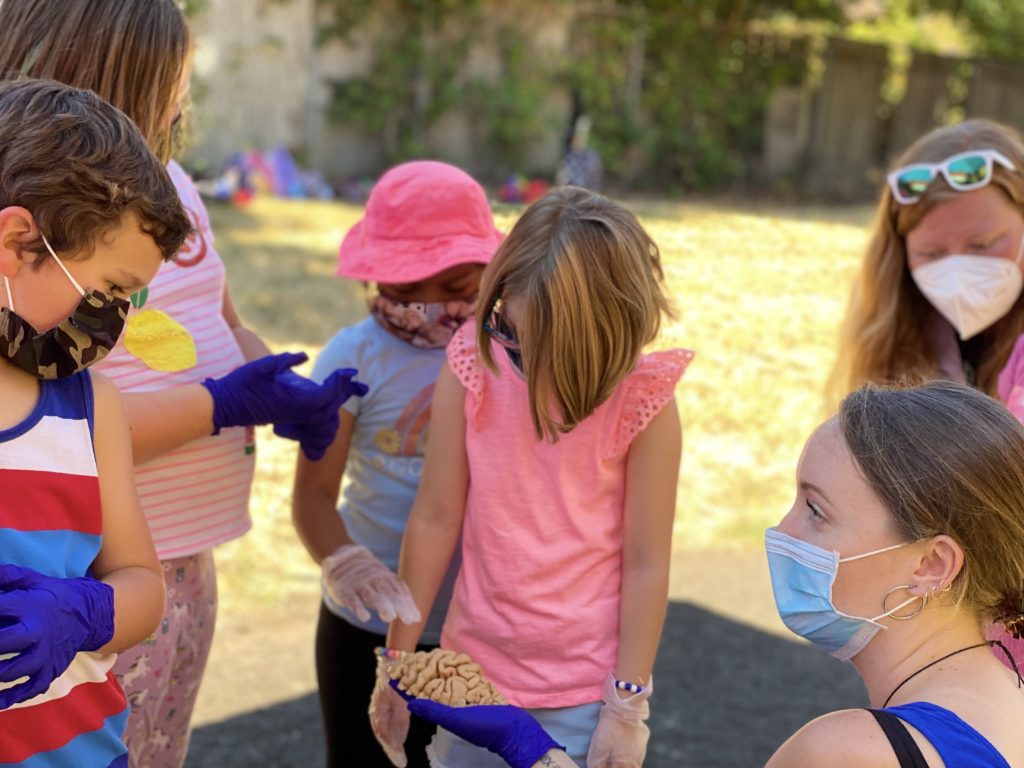
“I’m so proud of them for pushing their comfort zone and trying something new. Same goes for the teachers as well! Some were hesitant but eventually came around. I liked to hear what they thought about the brain – squishy, smelly, looks like chicken, weird but awesome! I also enjoyed talking about Phineas Gage with them, and many were shocked that one could survive a rod through the face.”
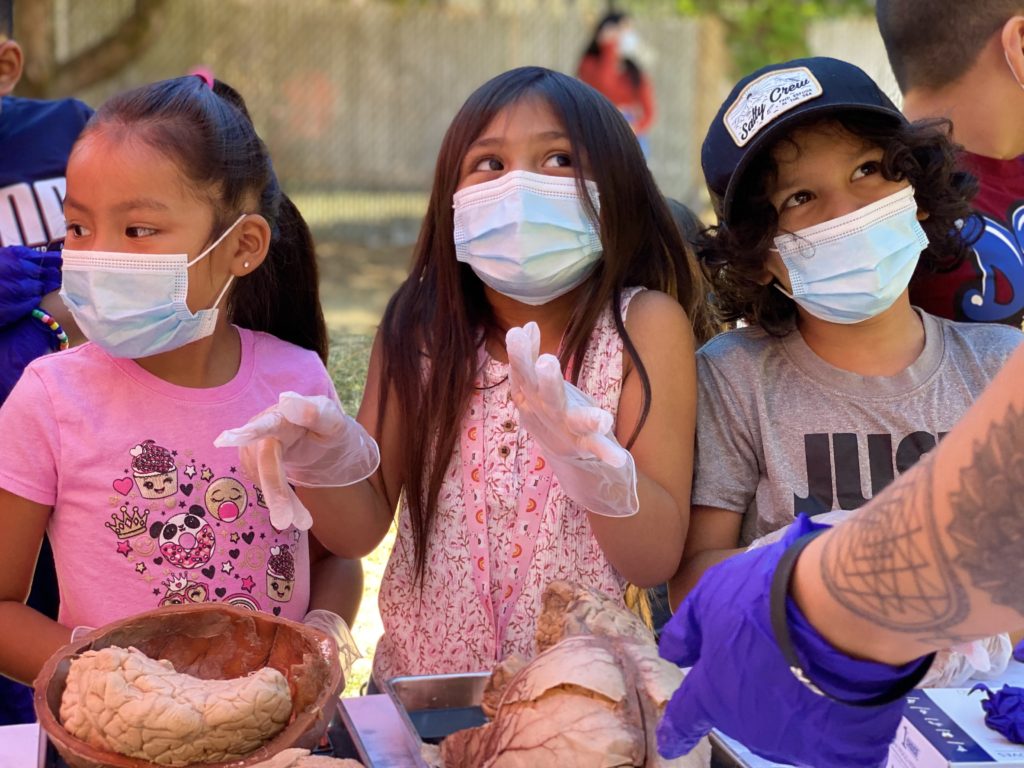
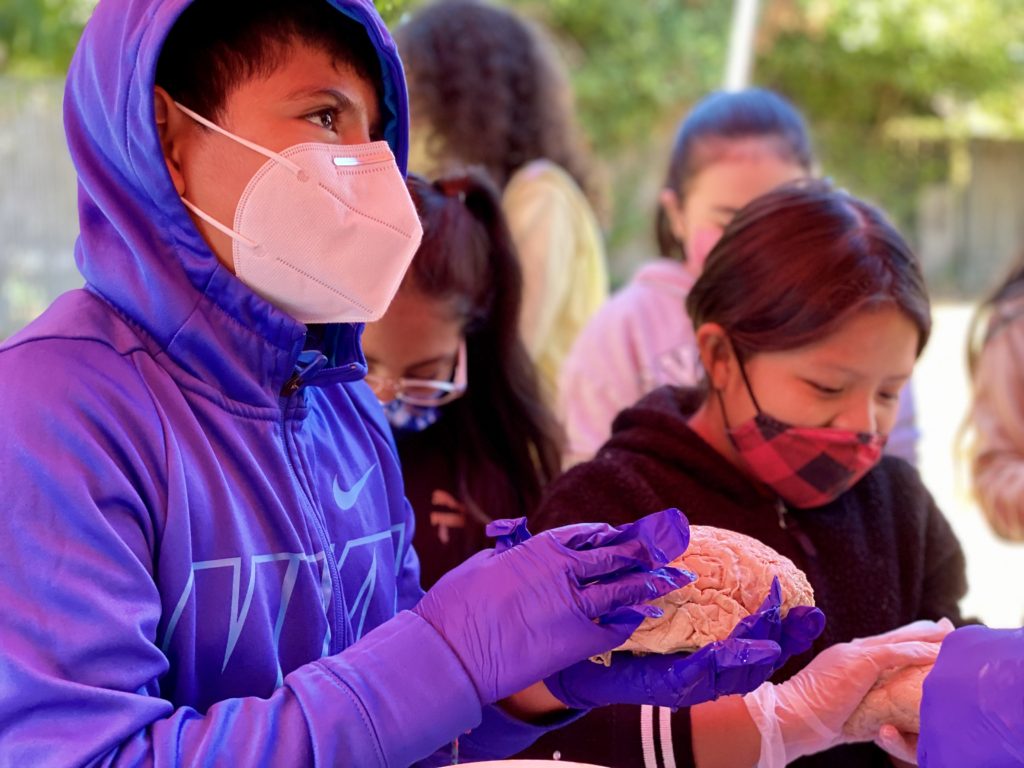
“Sharing my love of neuroscience with young kids and seeing the excitement on their face was such a fulfilling experience and takes me back to when I first gushed over science at that age. Thank you again for all that you do, it is truly amazing and touching the lives of so many.”
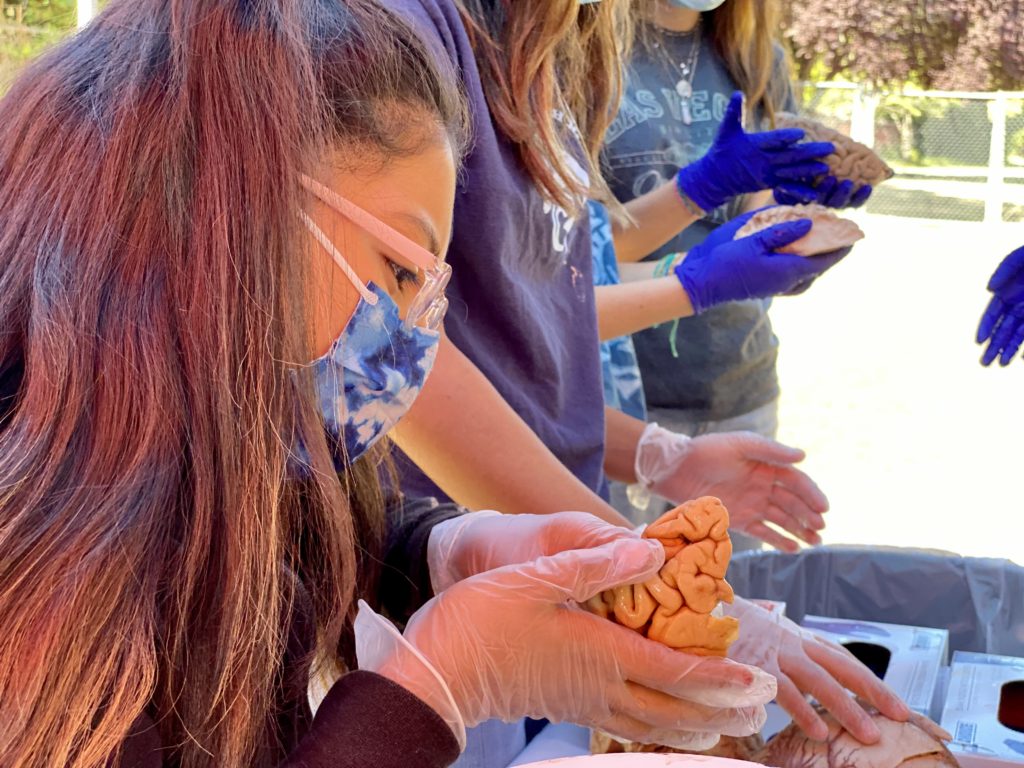
I cannot wait to join many more outreach visits!
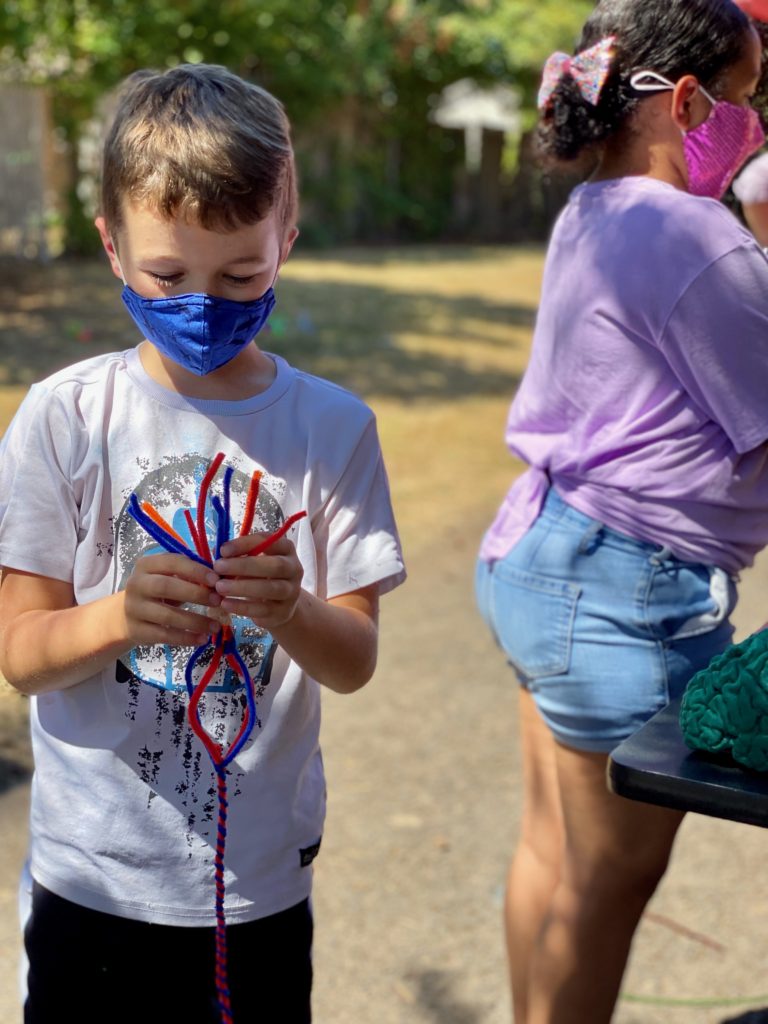
From Angela Hendrix @ NW Noggin
“I loved this group of kids, and what Jessica was teaching them.“
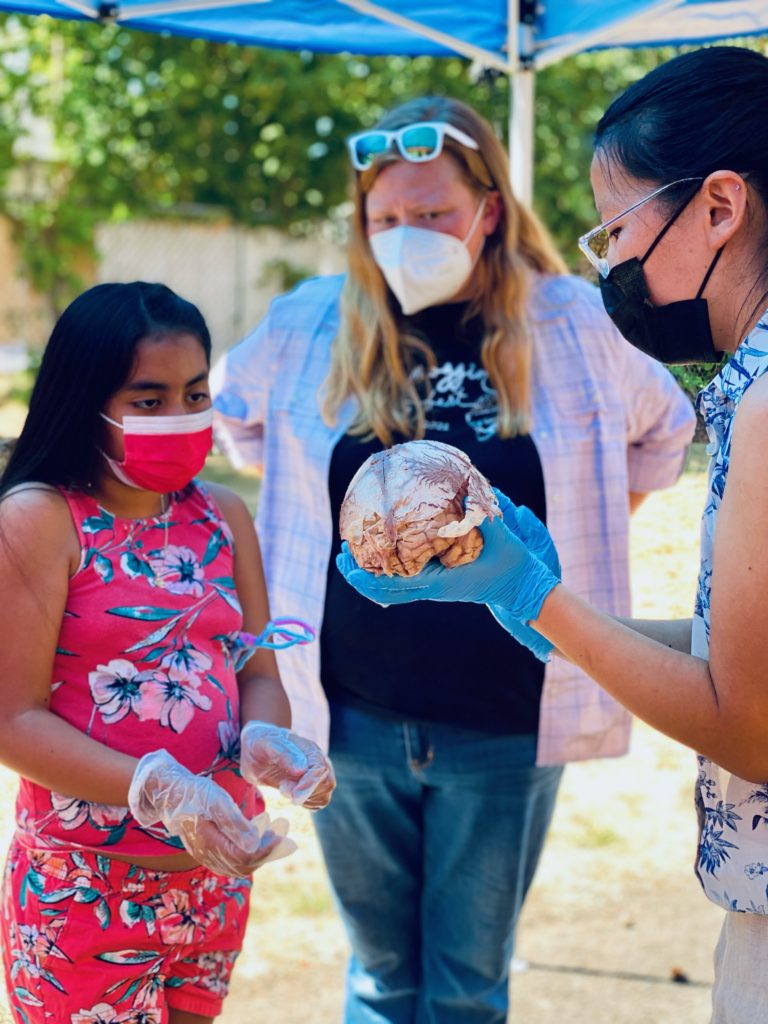
“It is so fun to watch them hold something in their hand, and start teaching the kids standing next to them. We inspire them to inspire each other.”
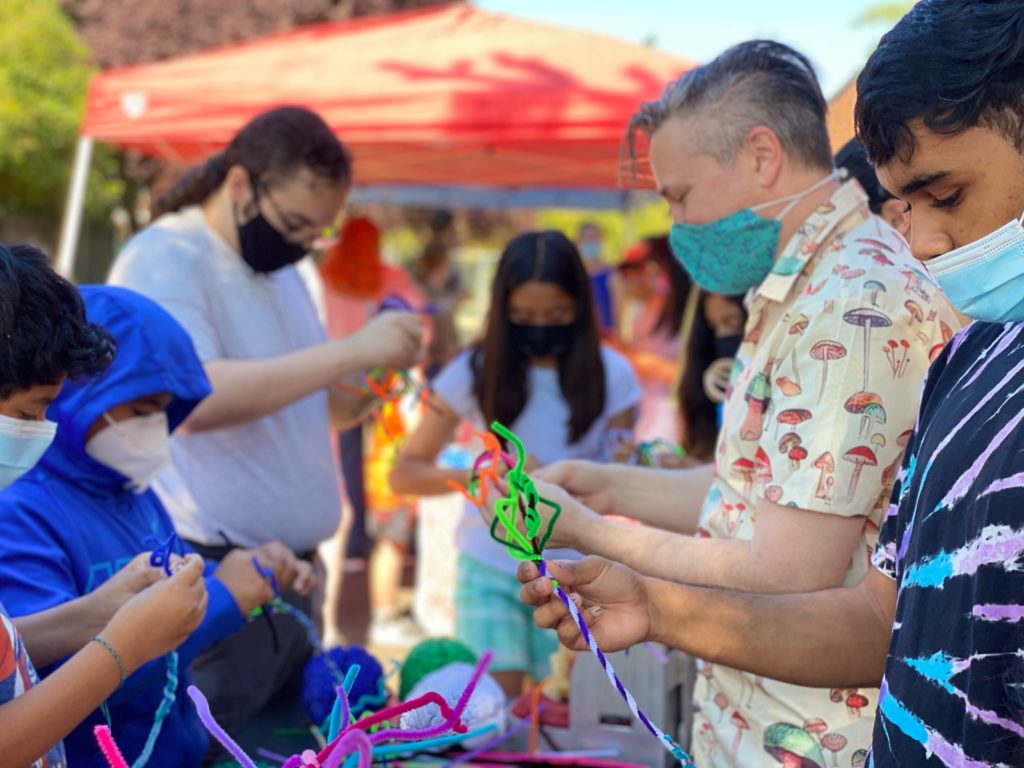
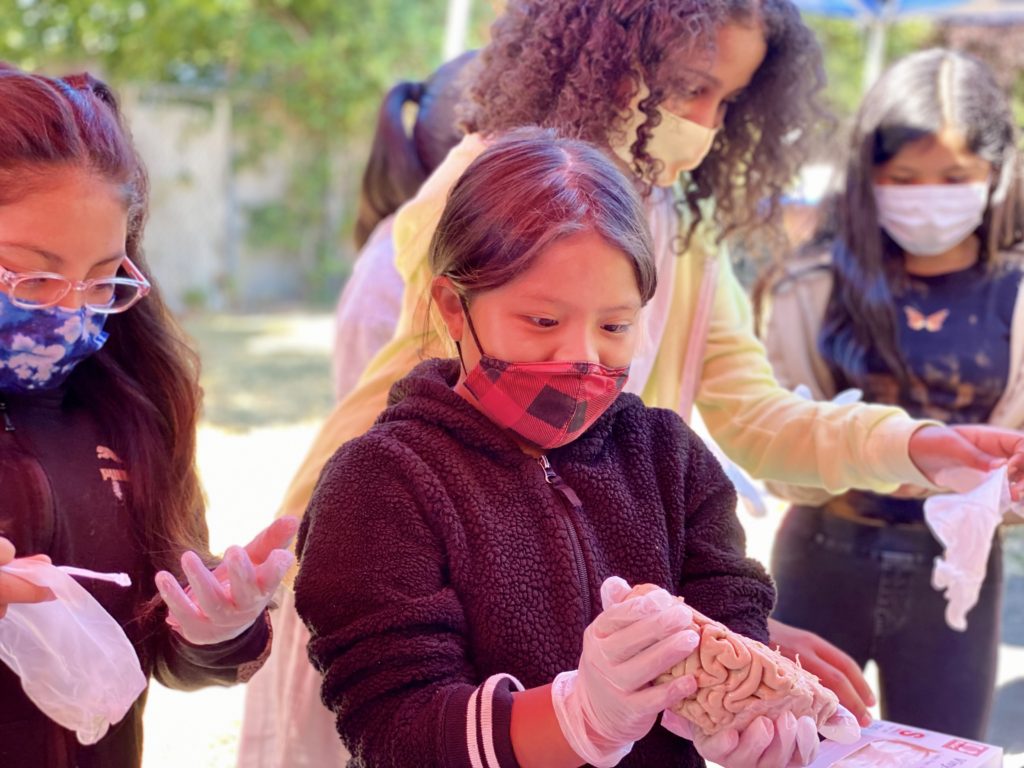
“From ‘slimy’ human brains, comparative anatomy with the brains in jars, 3D-printed brains, pipe-cleaner-neurons, all the skulls, and always an art table – there is something for everyone to explore starting at their comfort or excitement level.”
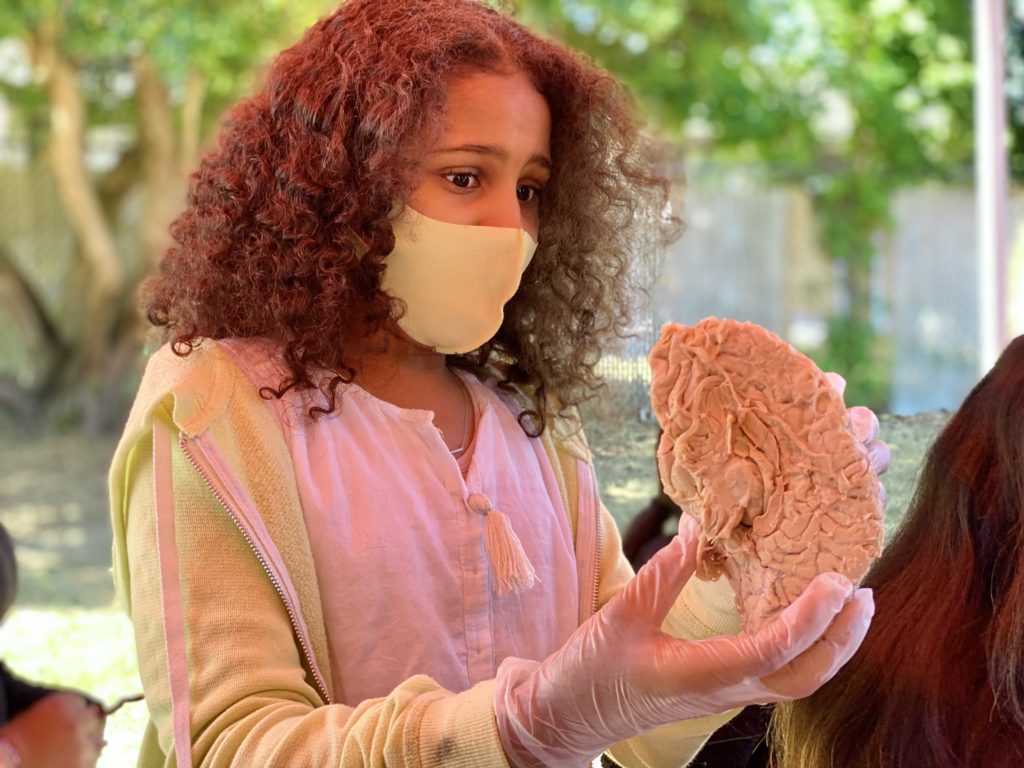
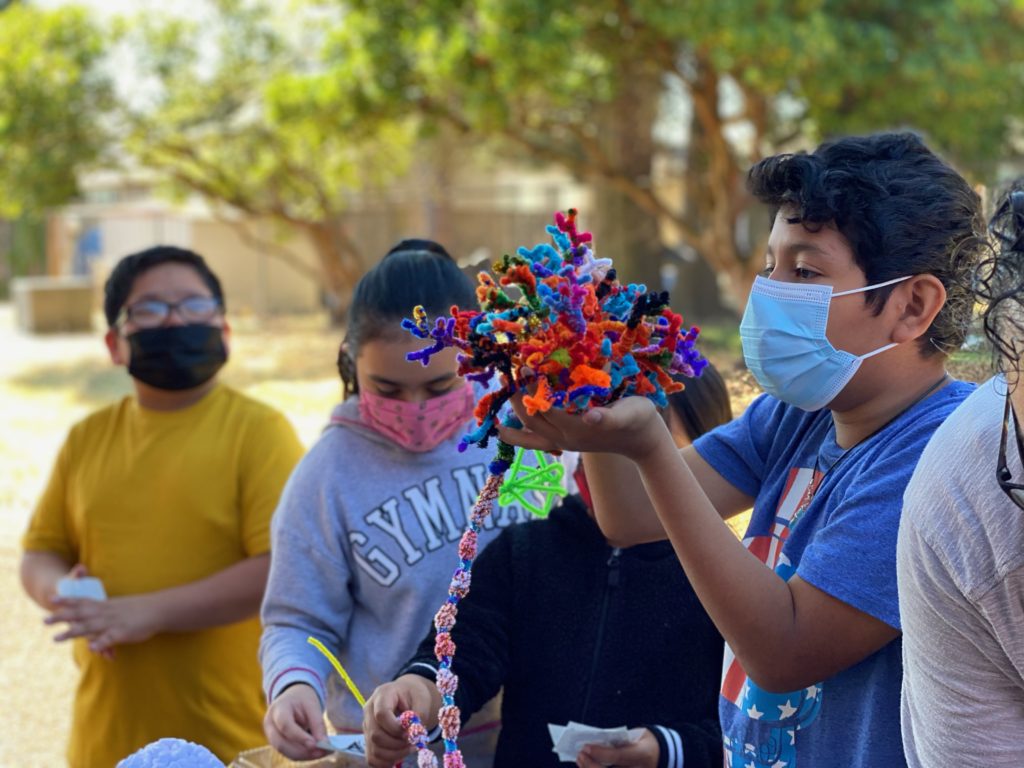
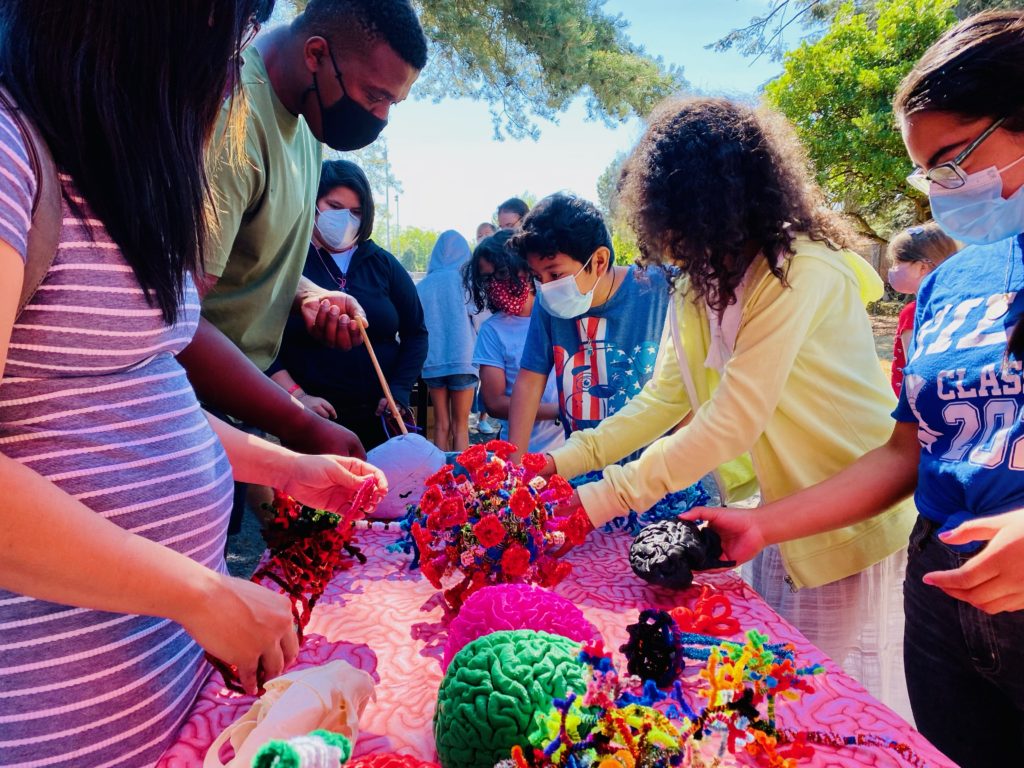
“It’s truly amazing.“
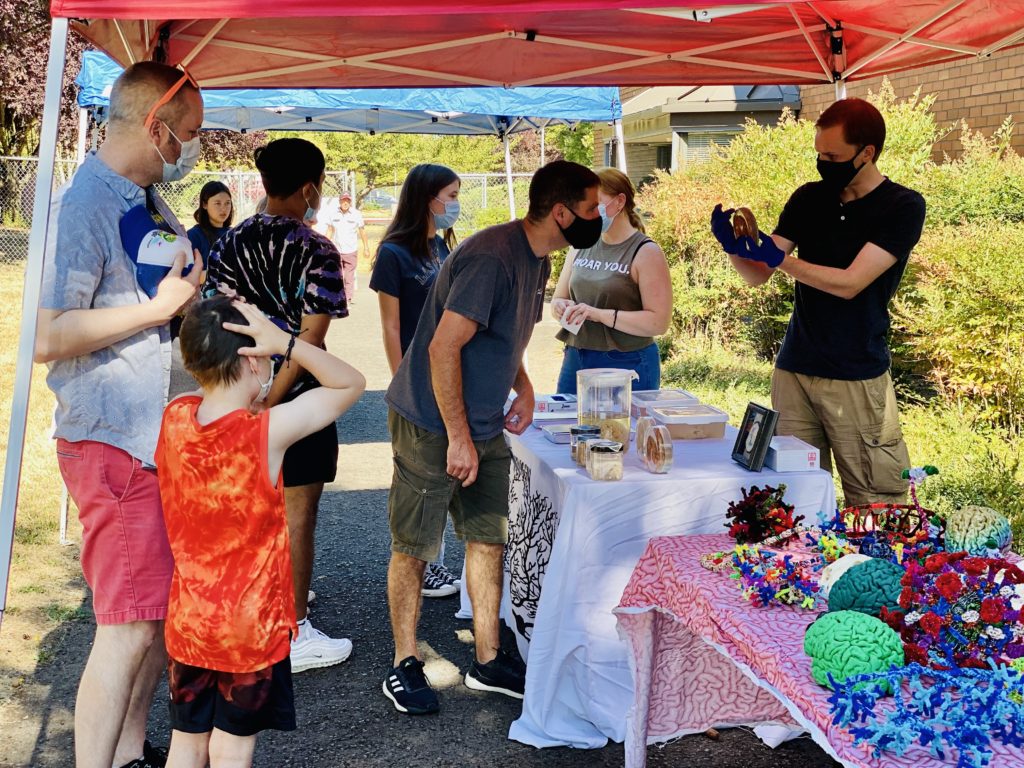
From Yangmiao Zhang @ OHSU
It was so much fun to be part of it.
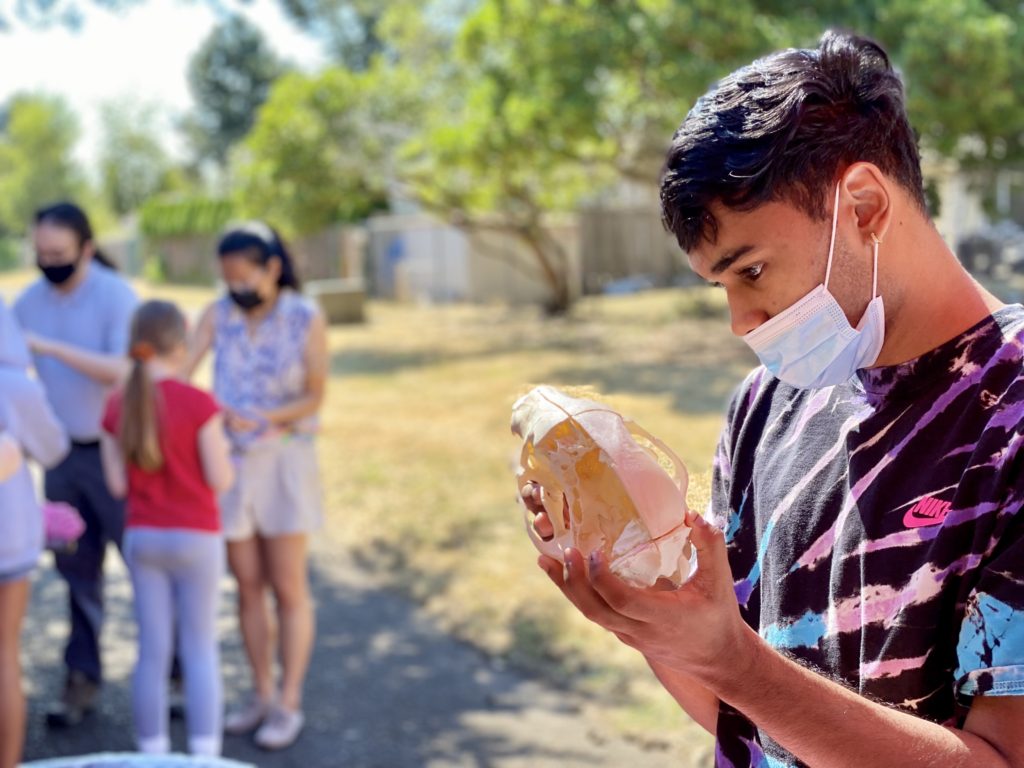
It was an interesting experience for me to learn how to communicate with grade school students in their language. The most gratifying are the moments when I saw the glow in their eyes as they truly learned something new.
Thank you for bringing me along!
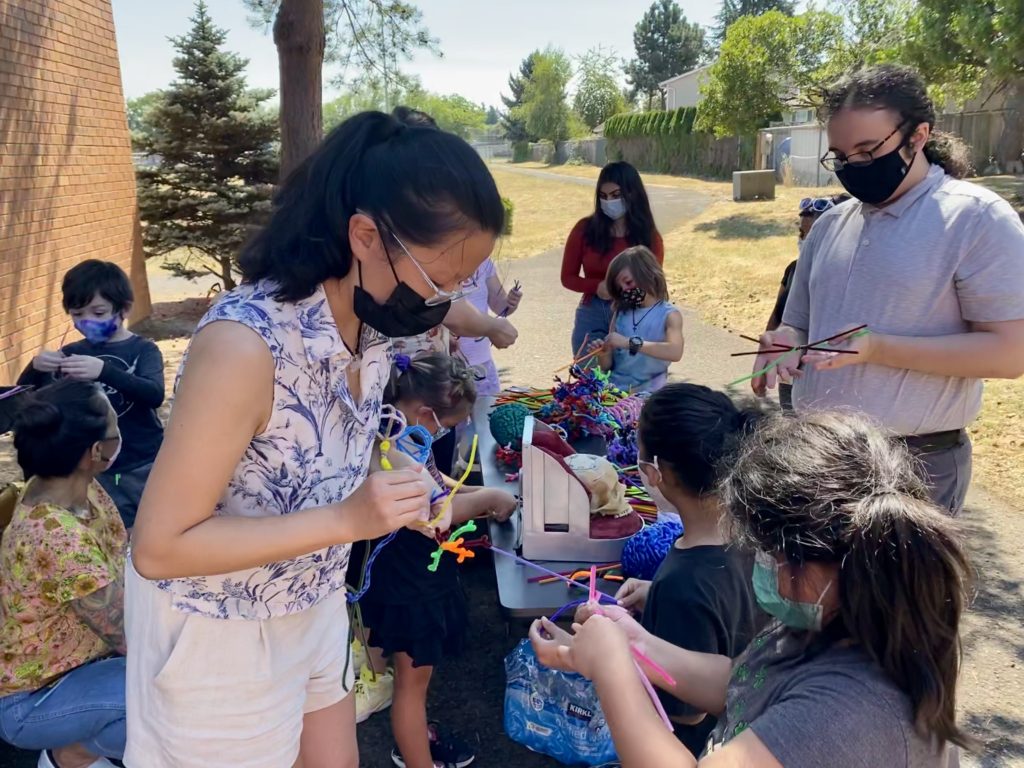
From Jessica Patching Bunch @ Minter Bridge Elementary
I was thrilled to partner with NW Noggin for the final day of presentations for summer school.
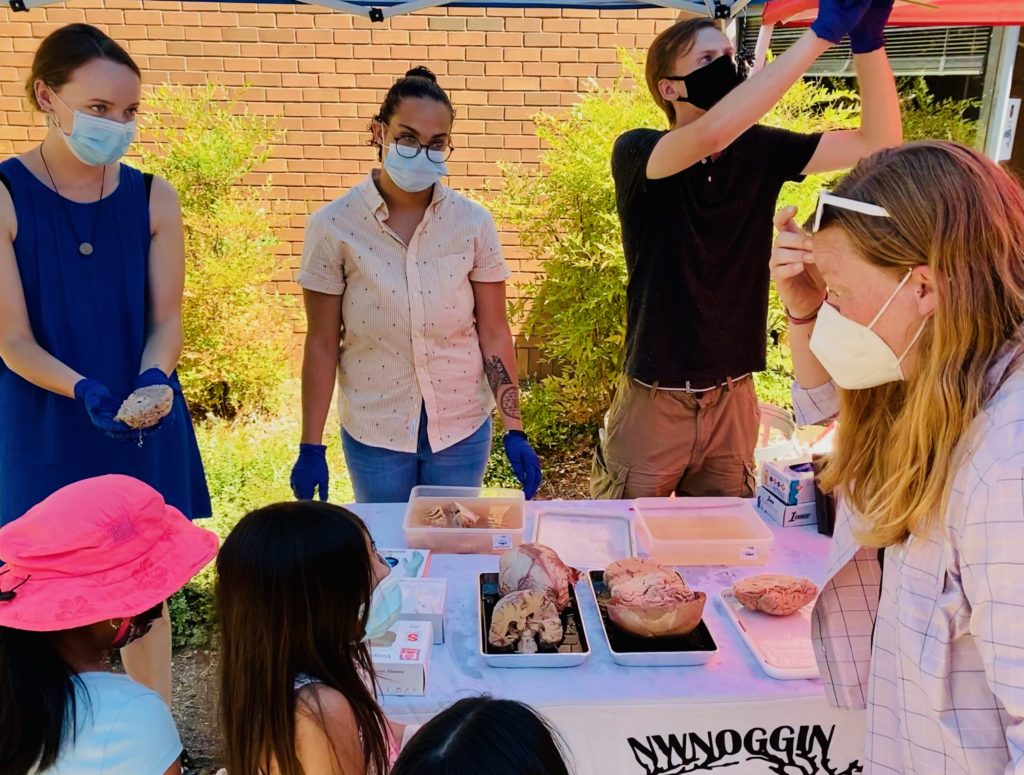
In the two weeks leading up to Noggin’s visit we had been learning about how our brain, body, and breath work together to help us self-regulate and cultivate tools to help us navigate stress, frustration, and anxiety.
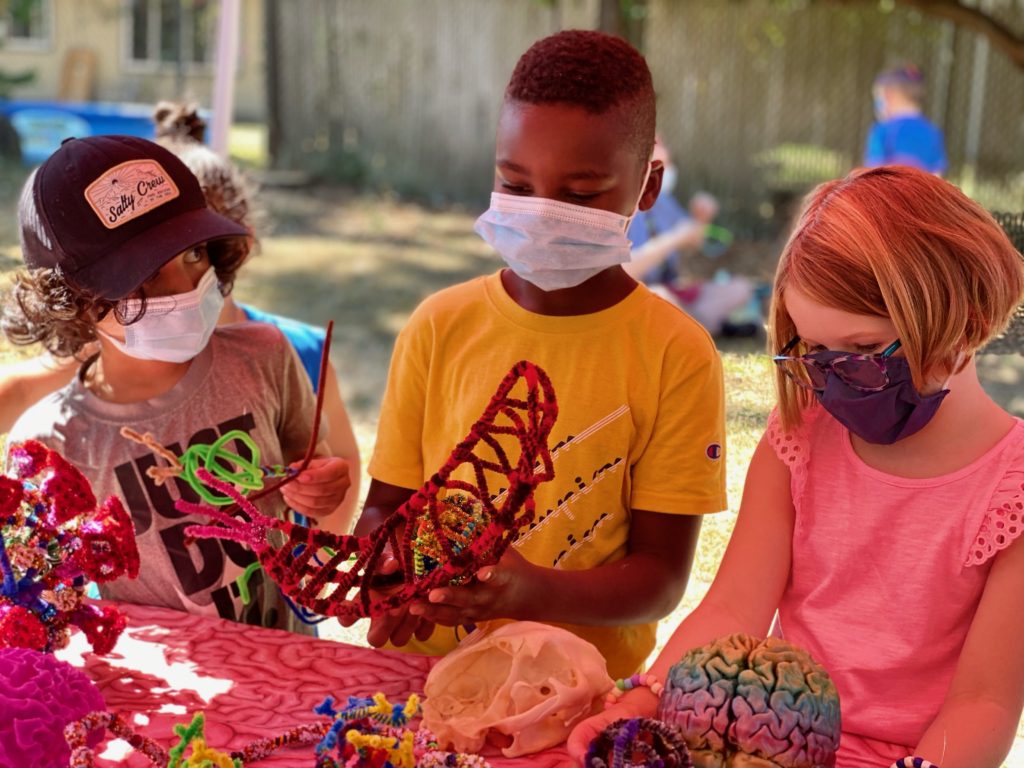
These topics can be tricky for kids to hold on to because they are a bit nebulous so having access to see and feel brains and ask questions about this thing inside their head that is directing all other functions is truly an incredible experience. The brain is such a mystery, you can’t feel it in your body like your pulse or breath, so it’s that much more exciting to explore the great unknown and something that most people don’t have a tangible opportunity to explore.
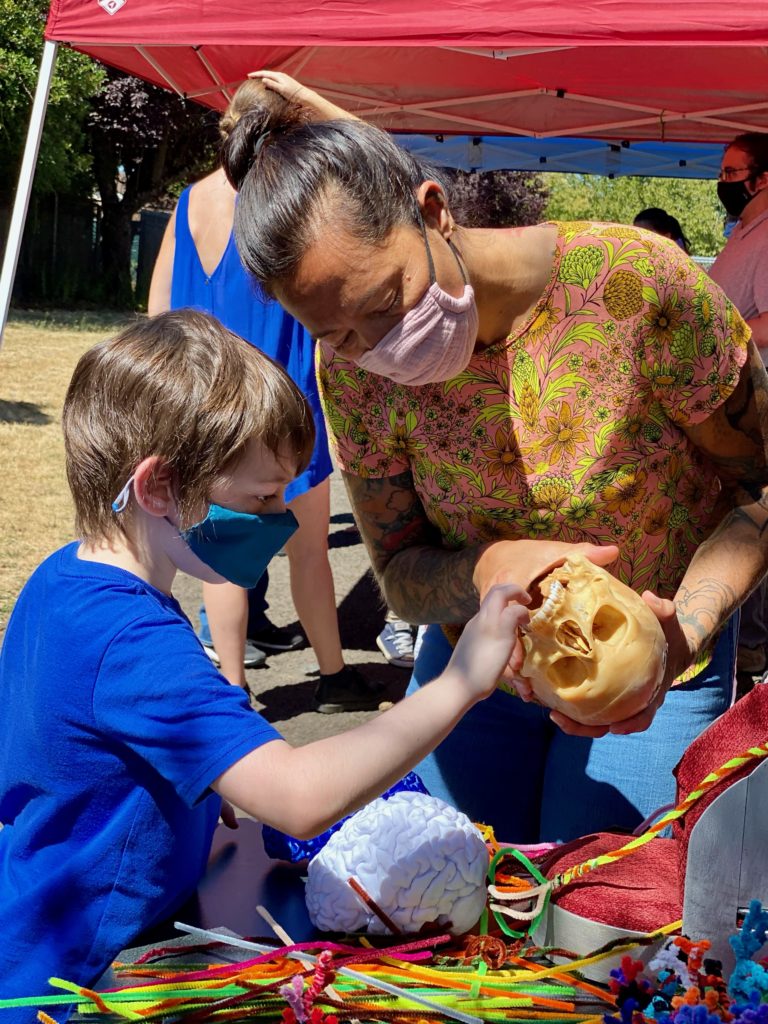
It was a blast seeing the students and staff alike get involved and get curious!
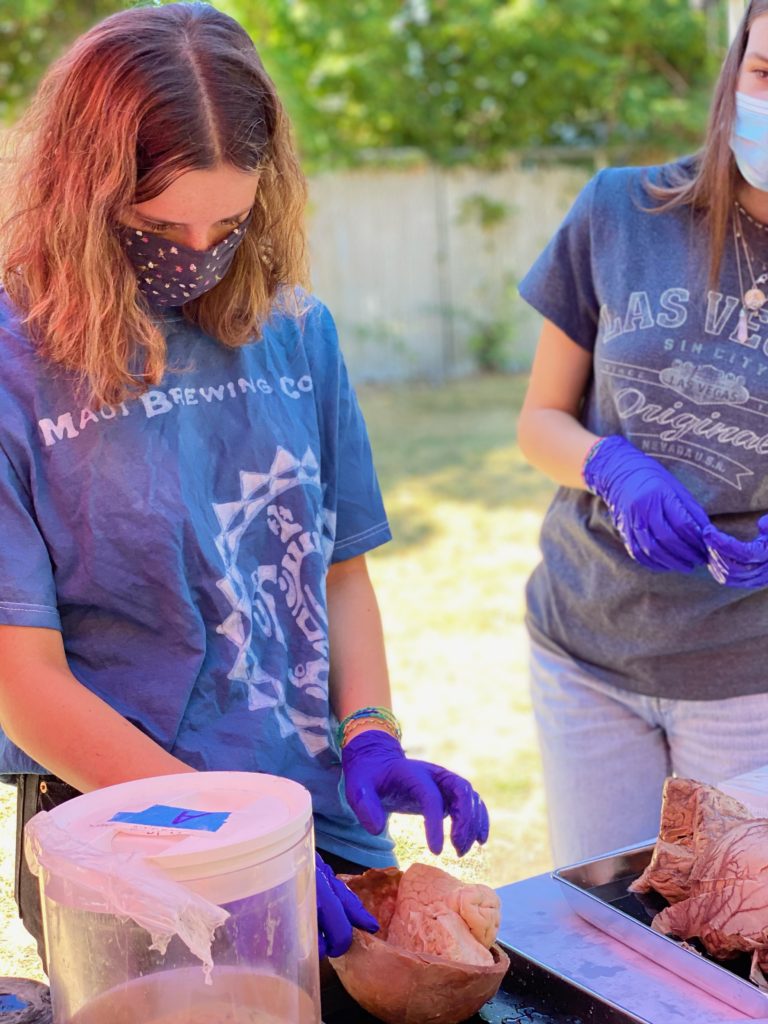
From the teachers
We asked the kids yesterday and these are their responses:
Pros
Holding the brains
Seeing the skulls
Making neurons
Touching the brain
Being able to compare monkey and chicken brains
Cons
They wanted to hold the BIG brain in the jar
See some fly brains
Less heat!
Our sincere thanks to all the students and teachers at Minter Bridge – and to our expert and extraordinary outreach volunteers! You are NW Noggin 🙂


